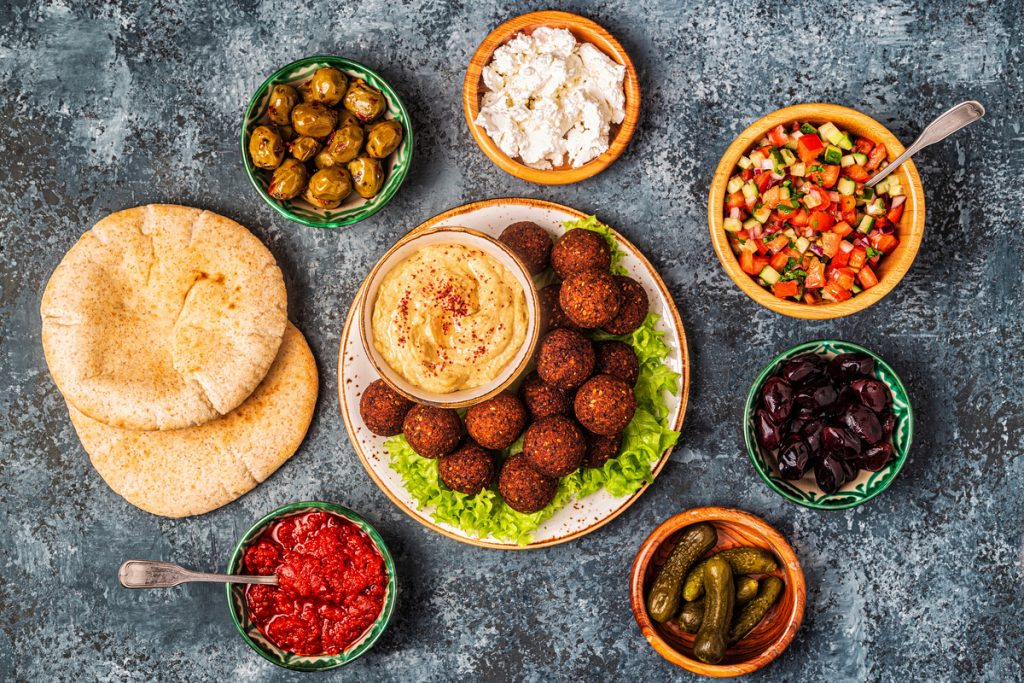Falafel is a popular alternative to meat-based foods for vegans and vegetarians. It is a humble Middle Eastern fritter that is now a part of America’s staple diet. Studies have found that the consumption frequency in different states is 1.44 times on average every year. It is high in multiple micronutrients and is an excellent source of protein and fiber. This helps reduce the production of hunger hormones like ghrelin and boosts the production of fullness hormones like peptide YY, cholecystokinin and glucagon-like peptide-1. Other nutrients in falafels are iron, zinc, folate, vitamin B6, carbs, calorie, potassium and copper.
Falafel can lower the risks of chronic diseases, curb appetite and support good blood sugar. Take your pick from a range of dishes containing falafels like signature sandwiches served in pita and plates with a choice of salad or seasoned rice. They are extremely healthy and help you reap the above-mentioned benefits. Rivaling an established restaurant and making falafel at home is tricky. But below are a few tips you may consider so you come close to the taste and texture of chef-made falafels at your nearby Middle-Eastern eatery.
1. Right Amount of Flour and Powder
Baking powder is optional but can assure airy, light and tender balls. This way they are less likely to be mushy and soggy. Add bulgur wheat, grains and nuts along to avoid making the falafel look like a deep-fried chickpea fritter. Baking powder is rich in vitamin A, vitamin B12, folic acid and niacin. They offer fantastic nutritional benefits and are healthy for both seniors and children. 3-4 teaspoons are ideal for 8 ounces dried and 1 cup of chickpeas.
The flour will hold your falafels together and keep them from falling apart when dunked in oil. It helps achieve a beautiful golden-brown exterior as well. The tiny patties are less likely to be crumbly which could damage the presentation visuals. Adding chickpea flour instead of all-purpose flour can make your falafels gluten-free. Adding 4-5 tablespoons is enough for three cups of chickpeas mix.
2. Use Fresh Leafy Herbs
Dried herbs tend to be packed and condensed and lose their flavor in a while. A significant amount of nutrients is lost in the drying process as well which compromises the benefits. Freshly picked parsley, mint and cilantro add a delicious flavor depth to falafels. They have a soft and subtle taste and are perfect for dishes with a short cooking time (4-5 minutes). In fact, adding herbs to your diet can manage heart disease and diabetes.
No wonder the fresh herbs market is expected to grow by $1,183.2 million from 2018 to 2025 at a CAGR of 3.9%. Chop them closest to the time when you will begin cooking. Make sure the bundles have a vibrant natural aroma and color. Snip the root ends and to avoid premature wilting, wash them in cold water and then pat dry with a paper towel for longevity.
3. Used Dried Chickpeas
Chickpeas give you good mental health, stronger bones and better digestion. This is the main ingredient of falafel and is packed with protein, fiber and carbohydrates. It can take on a variety of flavors and the America-grown ones have a sweet taste. The global chickpeas market gained a volume of nearly 13.37 million tons in 2020 and is expected to grow at a CAGR of 1.3% between 2021 and 2026. The soaked dried version makes the best falafel instead of the canned ones.
This is because they contain excess moisture. The texture of dried ones turns out to be authentic with prominent flavor and better seasoning options. But make sure to soak them for at least 24-hours before putting them in the grinder. You can add fava beans as well for added taste or thickness. Don’t forget generous amounts of garlic and onion for a game-changing flavor punch.
Falafels can easily fit into your regular diet. Follow these simple tips the next time you wish to prepare homemade falafels. But if you want to savor the same without putting in time and effort, simply order from your nearby restaurant. This is economical, healthy and saves you all the hassle of cooking and cleaning.

